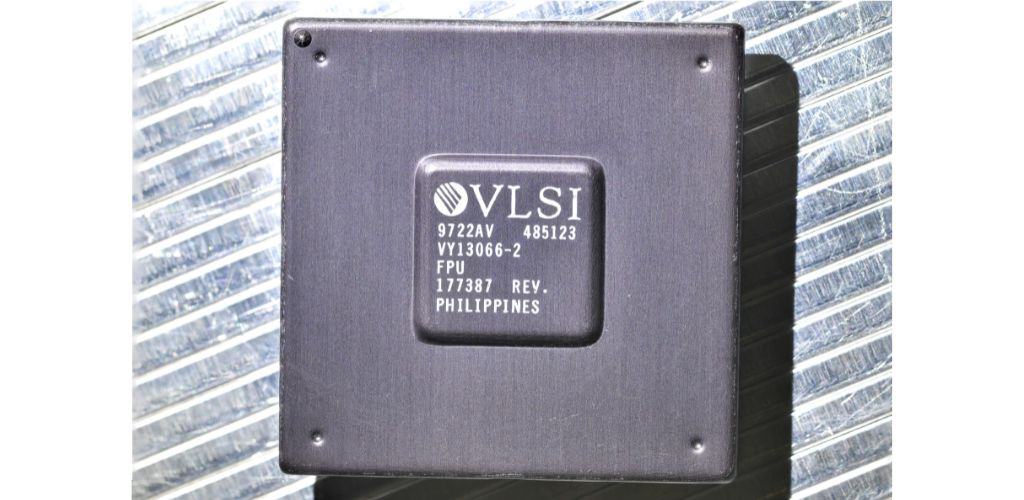The Patent Trial and Appeal Board (PTAB) has denied VLSI’s motion to terminate Intel’s involvement in an inter partes review (IPR) of a VLSI patent.
VLSI and Intel are engaged in a legal war across several jurisdictions.
For example, in 2021, a jury in Texas ruled that Intel should pay VLSI $2.175B in damages for infringing two VLSI patents.
In a related matter, as we discussed in this blog and as Bloomberg reported, the US Patent and Trademark Office (USPTO) Director, Kathi Vidal,
determined the petitioners in both cases, Patent Quality Assurance LLC and OpenSky Industries LLC, abused the Patent Trial and Appeal Board’s inter partes review process, attempting to leverage their patent challenges to extract money from other participants. Both companies filed challenges to VLSI patents underlying a $2 billion March 2021 patent infringement verdict against Intel Corp., just one part of a sprawling battle between Intel and VLSI.
The latest PTAB decision concerns what standard the PTAB should apply when determining whether preclusion applies.
VLSI, the owner of the patents at issue, argued that claim preclusion barred Intel from challenging the claims of the patent in the IPR.
VLSI asserted that the elements of claim preclusion were met because:
1) “Intel and VLSI are parties to both cases;”
2) “the district court entered a final judgment of infringement, no invalidity,” and Intel did not appeal invalidity; and
3) “‘the effect of’ Intel’s challenge is to collaterally attack the First Case’s Final Judgment.”
Intel responded that claim preclusion doesn’t apply to IPRs under the America Invents Act (AIA).
As the PTAB explained,
Claim preclusion prevents relitigating issues that were or could have been raised during a first action resulting in a final judgment, when a second action involves the same claim as the first. …
A claim, or cause of action, is considered to be “the same” when it “aris[es] from the same transaction” or “involve[s] a common nucleus of operative facts.” …
Preclusion operates to prevent a defendant in a first action from raising an issue in a second action “only if (1) the claim or defense asserted in the second action was a compulsory counterclaim that the defendant failed to assert in the first action, or (2) the claim or defense represents what is essentially a collateral attack on the first judgment.”
The PTAB agreed with Intel, rejecting VLSI’s argument that Congress must provide a “clear statement” to overcome the presumption that common law claim preclusion applies.
The PTAB noted that the AIA’s estoppel provisions are codified in 35 U.S.C. § 315(e):
That section applies claim preclusion to petitioners after an IPR final written decision and prohibits a petitioner from “request[ing] or maintain[ing] a proceeding before the Office” or asserting in district court or the ITC that a claim is invalid “on any ground that the petitioner raised or reasonably could have raised” during the IPR. § 315(e). Section 315(e) applies to future proceedings in both the Office and a district court. Id. If common-law preclusion applied after IPR proceedings, there would be no need for the § 315(e) estoppel provisions, because the principle Patent Owner now asserts—claim preclusion—would prohibit a petitioner, after an IPR final written decision, from raising arguments in a district court that it could have made during the IPR proceeding. Thus, the AIA expressly imposes claim preclusion in one direction—from an IPR to other proceedings—but not in the other direction—from district-court litigation to Office proceedings.
Also, said the PTAB, “the AIA inherently accepts the reality that parallel proceedings in a district court and the Office may address overlapping issues relating to asserted invalidity or unpatentability.”
Finally, the PTAB noted that Congress had a model for two-way preclusion but chose not to apply it:
The AIA contrasts with the predecessor statute defining inter partes reexamination. That statute included former 35 U.S.C. § 317, which included a “two-way” claim preclusion. … When Congress replaced inter partes reexamination with inter partes review, it did not maintain the prior statute’s express claim preclusion against an unsuccessful party in litigation.
This decision provides a second chance for alleged patent infringers to challenge the validity of a patent even after an adverse federal district court decision, but only under limited circumstances.
Just like the haiku above, we like to keep our posts short and sweet. Hopefully, you found this bite-sized information helpful. If you would like more information, please do not hesitate to contact us here.


